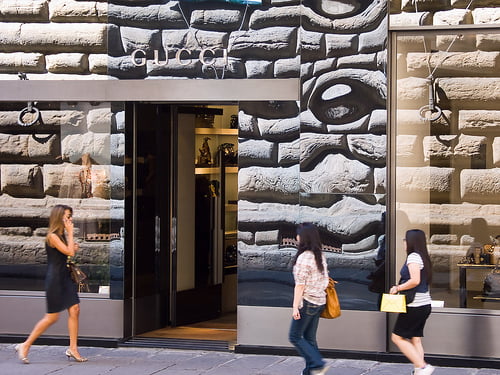

Environment
Gucci and Puma group releases sustainability plan
Pinault-Printemps-Redoute, the group behind leading luxury and sports brands, such as Gucci, Yves Saint Laurent, Alexander McQueen and Puma, has introduced five-year environmental and social targets across its brands as part of the next phase of its sustainability program.
PPR’s sustainability department, PPR HOME, has announced a set of core targets alongside an additional 5% stake in Wildlife Works Carbon. The carbon credits were acquired as part of PPR’s plan to leverage the benefits gained from the groups unprecedented Environmental Profit & Loss Account (EP&L), while reducing and managing PPR’s social and environmental footprint.
Francois-Henri Pinault, Chairman and CEO of PPR noted the business’ pivotal views on achieving the multi-tiered action plan: “Our pursuit of operating on a more sustainable level across all areas of our business is integral to our business plan and the longevity of our business. The next five years are pivotal and we now have a clear view of what we want to achieve, and the actionable targets we need to take to get there”.
“We are confident that this type of innovative, sustainability-driven approach will ultimately generate new business revenues from sustainable products and services and create new business models for us as a group.”
After coming number one in EIRIS’ recently released sustainability ratings report, Puma, the German sports-goods manufacturer, appears to be soaring ahead of its global competitors in the field. Unsurprisingly, PPR is proudly promoting its 2016 targets as the ultimate opportunity to reduce environmental impacts related to the production of luxury sport and lifestyle brands.
Key areas of focus during PPR’s ambitious period of strategies are man-made carbon emissions, waste and water, sourcing of raw materials, hazardous chemicals and materials, as well as paper and packaging. A set of specific targets in these areas to be achieved by 2016 include:
- Evaluating key suppliers at least every two years
- Reducing carbon emissions, waste and water usage by 25%
- Sourcing 100% of gold and diamonds from verified operations with no harmful impact on local communities, wildlife or ecosystems
- Sourcing 100% of precious skins and furs from verified captive breeding operations or wild, sustainably managed populations, whilst following accepted animal welfare practices and humane treatment.
By uniting all brands under PPR HOME, the company is trying to find broad sustainable solutions, but also striving to go one step further by delivering actual social and environmental returns alongside the financial—in other words, balancing the needs of the planet, its people and prosperity. Indeed, PPR were very much involved in 2009’s “Home” , an environmental documentary produced to encourage a deeper understanding of the changes that are occurring on our planet and raise awareness of the need to act quickly before we lose the only home we have.
Considering ethical and sustainable factors when buying lifestyle goods and voting with your wallet is one way to have a positive impact on environmental and societal issues; visit the Ethical Superstore and you’ll find they’ve done much of the research for you. As long as groups like PPR recognise the fundamental importance of addressing environmental and societal issues, the whole luxury brands industry can begin shifting in the right direction.
Further reading:


 Environment9 months ago
Environment9 months agoAre Polymer Banknotes: an Eco-Friendly Trend or a Groundswell?

 Environment11 months ago
Environment11 months agoEco-Friendly Home Improvements: Top 7 Upgrades for 2025

 Features8 months ago
Features8 months agoEco-Friendly Cryptocurrencies: Sustainable Investment Choices

 Features10 months ago
Features10 months agoEco-Friendly Crypto Traders Must Find the Right Exchange





























